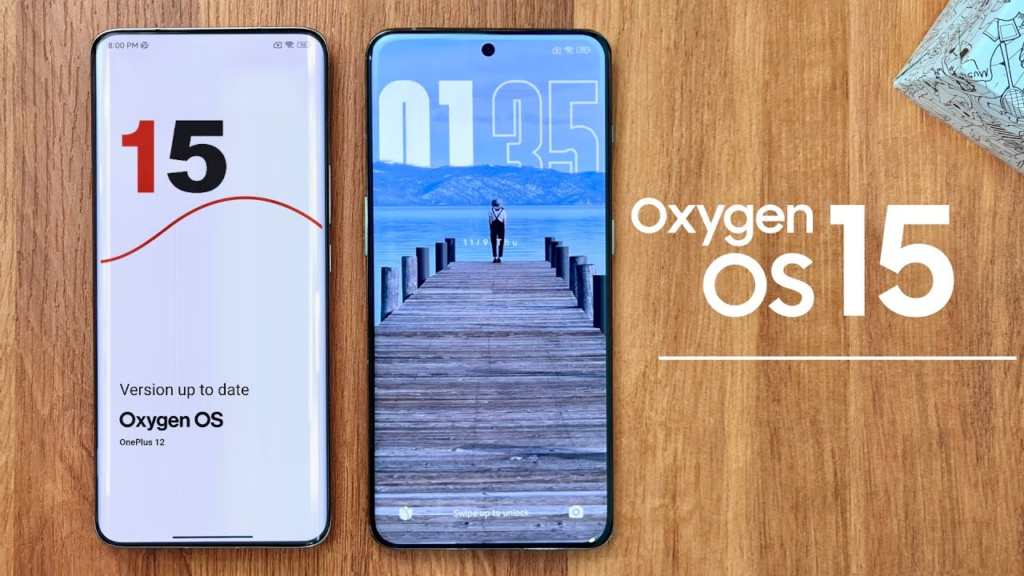OnePlus is making waves with its upcoming OxygenOS 15 update, a major departure from its traditionally clean and simple interface. Known for offering a near-stock Android experience, OnePlus is now pivoting towards a more customized approach, with OxygenOS 15 taking substantial design cues from Apple’s iOS 18. The new update, based on Android 15, will introduce various features that mirror Apple’s user interface while integrating elements from OPPO’s ColorOS and Xiaomi’s HyperOS.
The shift marks a significant change in OnePlus’s software strategy as it moves away from its previous minimalist philosophy, aiming to offer a more dynamic and customizable user experience.
iOS 18 and HyperOS Influence OxygenOS 15
In OxygenOS 15, OnePlus is introducing a completely revamped Control Center that closely mirrors Apple’s iOS. It is reported, the new Quick Settings menu will feature a 2×2 media player layout, a 1×2 brightness slider, and a 1×2 volume control panel, along with additional toggles for frequently used options.
Please follow us on Facebook and Twitter.
Android’s traditional combined section for notifications and settings will now be separated, much like iOS’s layout. Notifications will reside in a separate section, apart from the newly designed Control Center, offering a cleaner and more intuitive interface. This redesign is a significant shift from the usual Android structure, reflecting OnePlus’s desire to align more closely with iOS’s user experience.
Dynamic Island and Live Photos in OxygenOS 15
One of the most notable new features in OxygenOS 15 is the introduction of a dynamic island-style notification system. This feature, similar to iOS 18’s dynamic island, will sit at the top of the screen, offering interactive notifications that enhance user engagement. This makes notifications not only functional but also more visually appealing and easier to manage.
In addition, OnePlus is incorporating a feature similar to Apple’s “Live Photos” in its camera app, where images will capture a few seconds of motion before and after the shutter is pressed, much like Apple’s popular feature. Although this may be branded under a different name, the functionality is nearly identical to the Live Photo experience in iOS.
More Customization on the Lock Screen
The lock screen on OxygenOS 15 is also set for a transformation. Users will have more customization options, akin to what iOS offers. Personalization of backgrounds, widgets, and other lock screen elements will now be easier, giving users more control over the appearance and functionality of their devices. The introduction of these features is an indication that OnePlus is focusing on providing a more interactive and personalized experience, appealing to users who enjoy tweaking their device’s look and feel.
Borrowing from the Best: iOS and HyperOS Together
OnePlus’s decision to adopt iOS-like features comes alongside its integration with OPPO’s ColorOS, signaling a larger shift towards creating a feature-rich and customizable interface. OnePlus’s collaboration with Xiaomi’s HyperOS is also evident in some design choices, particularly in the structure of the Control Center. By borrowing from two leading platforms (iOS and HyperOS) OnePlus is blending the best of both worlds in OxygenOS 15.
The update is expected to introduce a new volume slider design similar to iOS, where the slider starts large and shrinks as the volume is adjusted to avoid being intrusive. This level of polish and attention to detail reflects a growing trend of Android manufacturers taking inspiration from iOS’s more refined and mature design language.

What to Expect with OxygenOS 15
The first beta release of OxygenOS 15, based on Android 15, is expected to launch later this month, giving users a chance to explore the new features firsthand. The update is poised to be one of the most significant changes in OnePlus’s history, transforming the software from its minimalist roots into something more robust, customizable, and familiar to those who have used iOS.






